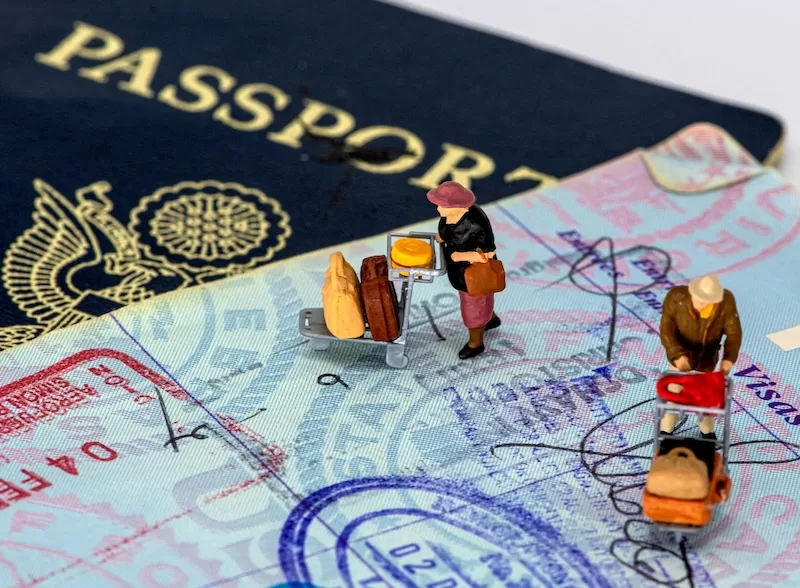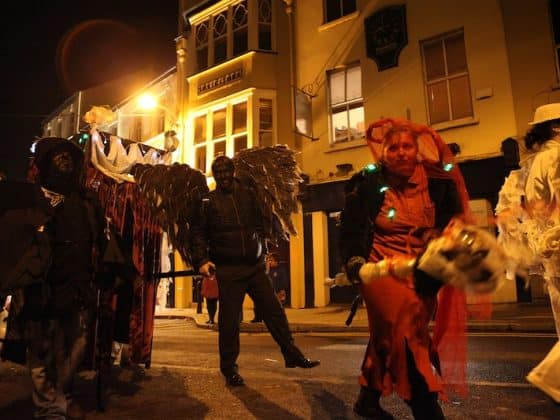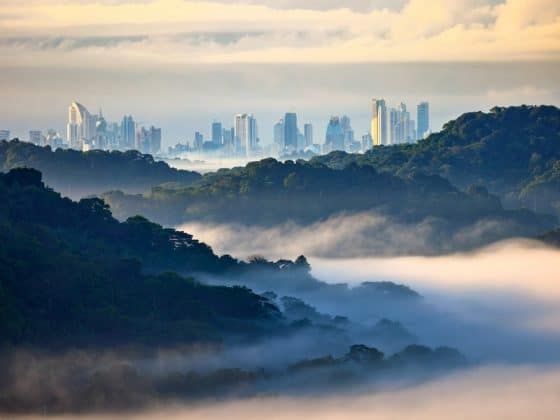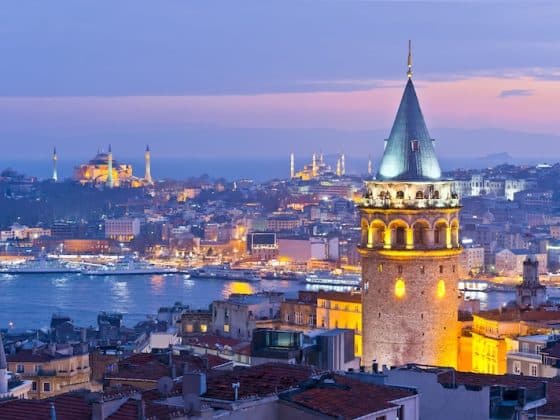Introduction
The idea of retiring in Malaysia is easy to fall for. Hawker stalls perfuming the air with garlic and chili. Evening walks under palm trees while the call to prayer drifts over the city. A three–bedroom condo with a pool that costs less than your old property tax bill back home. The dream sticks because it promises something precious in retirement: everyday comfort that does not drain your savings.
Retire in Malaysia though, and you quickly discover that this is about more than chasing low prices. It is about understanding how life runs beneath the surface. Monsoon seasons. Apartment management fees that arrive quietly. Visa rules that decide whether you stay for another five years or have to pack boxes. The country rewards those who read the fine print as carefully as they read the menu at their favorite nasi lemak stall.
At the same time, Malaysia offers rare advantages. A territorial tax system means many foreign pensions and investment incomes are not taxed locally, at least under current rules. English is widely spoken, especially in cities and among professionals. Healthcare quality punches above its weight, with several Malaysian hospitals listed among the world’s best.
The goal here is to guide you into this new setting with both eyes open. From costs and healthcare to housing choices and long–stay visas, this article unpacks the essential steps to retire in Malaysia so that the dream and the plan move forward together.
Why Consider Retiring in Malaysia
Tax and financial perks
One of the most attractive aspects of retiring in Malaysia is how taxation works. Malaysia generally follows a territorial tax approach, which means tax is focused on income earned inside the country. For individual tax residents, many forms of foreign-sourced income brought into Malaysia (including pensions and investment income) are currently exempt from Malaysian tax until December 31, 2026, provided certain conditions are met. This structure can significantly benefit retirees whose income comes from abroad, though it’s important to get personalized tax advice to ensure those exemptions apply to your specific situation and to understand how rules may evolve in the future.
Layer that onto Malaysia’s relatively low cost of living. On average, the cost-of-living including rent in Malaysia is around 60% lower than in the United States. For a retiree doing long–term math, that difference is not just nice to have. It is life–changing.
Language, culture and ease of adaptation
Relocating abroad in retirement can feel daunting when you imagine every bank appointment or doctor’s visit happening in a language you don’t speak. In Malaysia, that worry often fades faster than expected. Malay is the official language, but English is widely used in cities and in many everyday situations, from private hospitals and clinics to banks, condo management offices and most large businesses. Younger Malaysians in particular tend to switch between Malay and English with ease, and bilingual signs are common in urban areas.
Still, this comfort zone has its boundaries. In smaller towns and more rural regions, English may be less fluent, and a few errands may require patience and simple Malay phrases.
The cultural setting itself is richly layered: Malay, Chinese, Indian and Indigenous traditions share the same streets, and Islam shapes many aspects of public life. Food, holidays and neighborhoods reflect that diversity in vivid ways. Retirees who thrive in Malaysia usually embrace this variety rather than expecting it to match what they left behind.
Diverse lifestyle choices
Some people picture retirement in a global city with rooftop bars, while others picture a balcony facing the sea to sip coffee in. Retire in Malaysia and you can choose among several versions of that story. Kuala Lumpur and the wider Klang Valley offer big–city convenience and skyline views. Penang’s George Town wraps colonial architecture around one of Asia’s great street–food scenes. Langkawi or parts of Sabah invite slower, more coastal lives.
You can live mostly among locals in a traditional neighborhood, inside a modern condo tower near a mall, or in a gated community with a pool and security guards. That range allows retirement in Malaysia to feel tailored instead of one–size–fits–all.
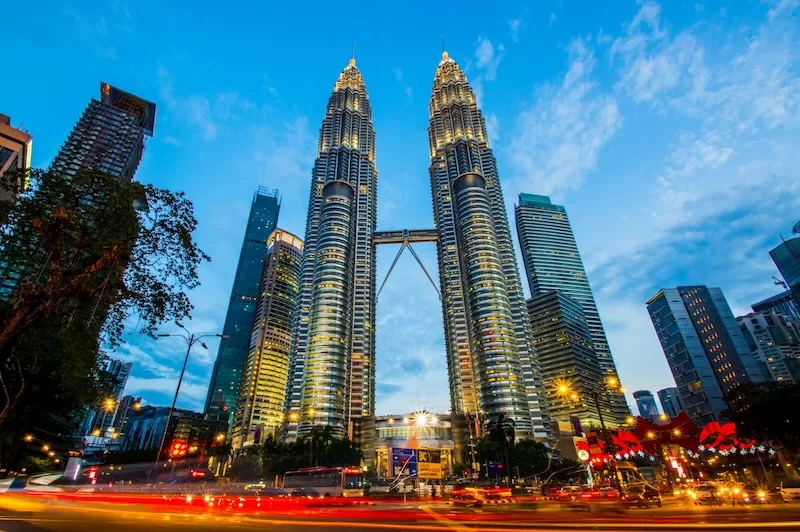
Ownership rights and property access
One of the first questions many retirees ask is, “Can I actually buy a home there in my own name?” In Malaysia, the answer is generally yes. Foreigners are allowed to own property, though the rules vary by state. Minimum price thresholds apply — often starting around $144,000 to $240,000 USD — and certain land types are reserved for citizens. So, the search usually begins in the mid-range or premium market rather than budget options.
This structure serves a purpose. When you purchase a home in Malaysia, you hold a title deed and a secure position under the law. For many retirees, that sense of stability is just as meaningful as the sea view or the size of the balcony.
Starting fresh in a new country can feel lonely if you are the only foreigner in sight. In Malaysia, you are not. Expat communities cluster in Kuala Lumpur, Penang, Johor Bahru and a handful of other cities. Long–term foreigners organize meetups, book clubs, hiking groups and charity events. Online forums and local WhatsApp groups buzz with recommendations for doctors, immigration agents and favorite kopi stalls. These networks soften the learning curve. Instead of solving every puzzle from scratch, you get guidance from people who already figured out which hospital actually answers email, which immigration queue moves faster and how to renew a phone plan without a headache.
Lifestyle and climate at a glance
Retiring in Malaysia means humid tropical air, no snow, and two broad monsoon patterns rather than four classic seasons. You get hot days, warm nights, and periodic downpours that clear the heat. Food is central to culture and social life, from Ramadan bazaars to Chinese New Year feasts and Deepavali sweets. English and Malay mix with Mandarin and Tamil in daily conversation. Cities feel busy and built up, while coastal and highland regions ease into a gentler tempo.
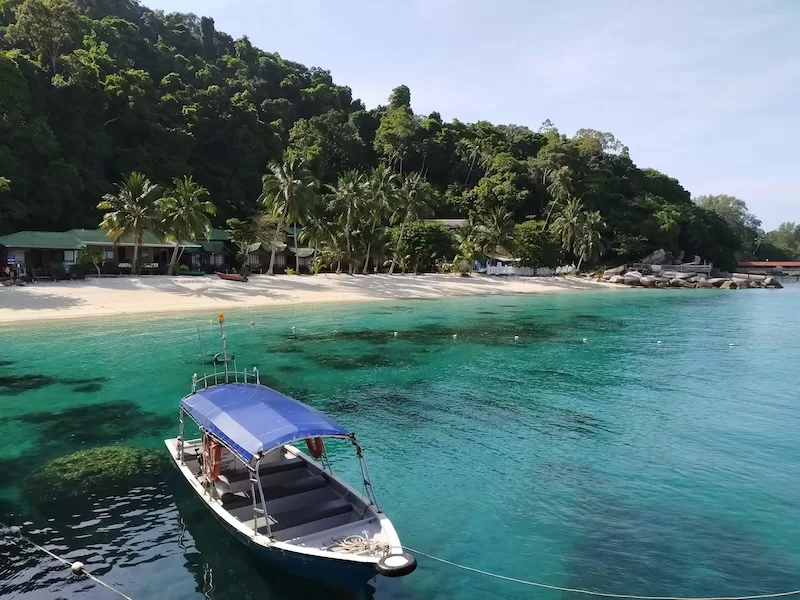
Read More Like This: 8 Reasons to Retire in Malaysia
Cost of Living and Real-Estate Realities
Housing market and purchase thresholds
Foreigners are allowed to buy real estate in Malaysia, and that fact encourages many retirees to consider a long stay. The details decide how comfortable that reality becomes.
What to know about buying property
• Price ranges vary by city and state. A modern condo in central Kuala Lumpur will cost more than a walk–up apartment in Ipoh or a smaller place in a secondary town. Seaview units in Penang or Nusajaya carry premiums.
• State thresholds matter. State thresholds matter. Each state sets a minimum purchase price for foreign buyers, generally starting around RM 600,000 to RM 1 million, roughly $144,000 to $240,000 USD depending on the exchange rate. Properties below those thresholds are usually off-limits to overseas buyers, which means many retirees end up looking at mid-range or higher-end homes right from the start.
• Strata versus landed property. Many expats choose strata–titled condos because management handles building maintenance, security and facilities. Landed houses may offer more space but can demand more hands–on upkeep.
• Extra fees add up. Beyond the purchase price, stamp duty, legal fees, valuation fees and in some cases real estate agent commissions all stack onto the total. You will also pay monthly management fees for condo facilities and sinking–fund contributions for long–term repairs.
It helps to view a Malaysian property not just as a place to sleep, but as a small system that lives in a hot, humid climate. Air–conditioning, lifts, pools and security staff all require power and maintenance. A condo that looks cheap on a listing site can feel less cheap once monthly management fees and realistic electricity bills enter the picture.
Everyday living expenses
Owning or renting the home is one part of the story. Living in it every day is what turns “retire in Malaysia” from fantasy into routine.
Let us look at some indicators:
• Recent data show the cost of living plus rent in Malaysia is significantly lower than in the United States.
• A single retiree can live comfortably on about $1,500 USD per month in Malaysia, while many couples enjoy a good life on around $2,500 USD.
• Examples from expats who share their budgets show that a couple in Kuala Lumpur or Penang with a mid–range rental, regular meals out and private health insurance often spends between $1,400 and $3,000 USD per month, depending on lifestyle.
Monthly Budget Snapshot
Your monthly spending in Malaysia depends on city choice, housing style and how often you reach for imported comforts instead of local options. Life in central Kuala Lumpur feels different from a Penang seafront suburb or an inland town. Use this snapshot to picture realistic month–to–month expenses.
| Lifestyle Type | Where You Might Live | Monthly Budget Estimate | What Life Looks Like |
| Modest & Comfortable | Older condo in outer Kuala Lumpur; local neighborhood in Ipoh | $1,300–$1,800 USD/month | Simple apartment, mostly cooking at home, frequent use of hawker stalls, public transport, careful control of air–conditioning |
| Balanced & Social | Mid–range condo in Penang (George Town or Tanjung Tokong); newer suburb of Petaling Jaya | $1,800–$2,600 USD/month | Pool and gym on site, regular eating out, private health insurance, short trips around Malaysia and nearby countries |
| Upscale & Active | High–rise with facilities in central KL; seafront condo in Penang or Johor Bahru waterfront | $2,600–$4,000+ USD/month | Larger unit with view, frequent restaurant meals, domestic help, private hospitals, regular regional travel |
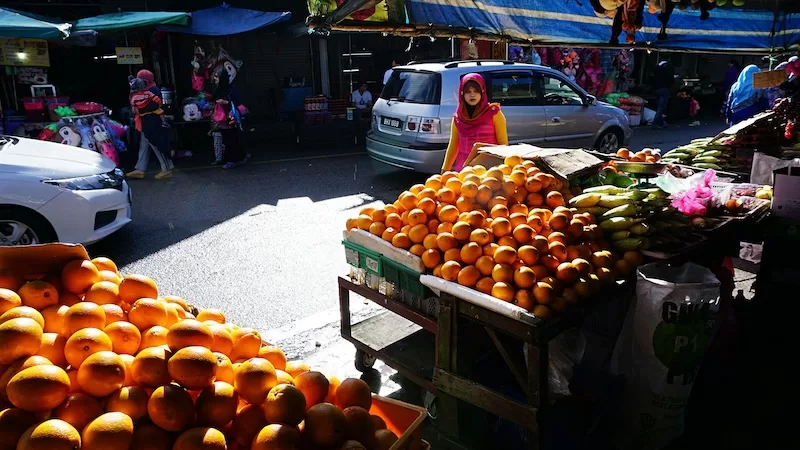
Read More Like This: A Look at the Lifestyle in Malaysia
Visas, Residency and Legal Requirements
Big–picture routes into Malaysian residency
For most foreign retirees, the main long–stay options fall into a few categories:
- Malaysia My Second Home (MM2H) multi–year residency program
- Premium Visa Programme (PVIP) for high–net–worth individuals
- State or special–zone variations of MM2H, such as Sarawak’s version
- Spouse or family–related visas for those married to Malaysian citizens
Each comes with its own mix of financial thresholds, fixed deposits, and documentation. Many retirees who can meet the conditions opt for MM2H or PVIP. Others marry the love of their life and follow the family route.
Malaysia My Second Home (MM2H)
MM2H is the program most associated with the phrase “retire in Malaysia.” The current version, updated in 2024, uses a three–tier structure: Silver, Gold and Platinum. Each tier asks for a fixed deposit in a Malaysian bank and ties the visa duration to the level of investment.
Core idea: you show Malaysian authorities that you have significant financial resources, place a fixed deposit at an approved level and meet other criteria. In return, you receive a multi–year pass that allows you to reside in Malaysia long term with multiple entries.
Typical elements include:
• Minimum age (recent changes lowered this, so younger long–term residents can apply)
• Proof of liquid assets and fixed deposit placement in a Malaysian bank at the tier you choose
• Clean police record and good–conduct certificates
• Medical insurance coverage and health screening
• Application and processing fees, plus potential agent fees
Exact numbers evolve, so serious applicants always cross–check with official immigration sites or a reputable immigration lawyer before sending money.
Who MM2H suits well:
• Retirees with substantial assets who want a long–term base in Malaysia
• People happy to lock in a significant fixed deposit for stability
• Those who value multi–year certainty over short tourist runs and frequent border hops
Read More Like This: US Retiree Malaysia MM2H Visa: Your Complete 2025 Guide
Premium Visa Programme (PVIP)
PVIP functions like a “golden visa” for Malaysia. It targets high–net–worth individuals who can show a substantial offshore income and place a large fixed deposit. Recent guidance suggests applicants need a minimum offshore income of around RM 40,000 per month and a fixed deposit of RM 1 million ($240,00 USD), with some flexibility for withdrawals after a year for approved purposes.
In exchange, PVIP can grant a 20–year, multiple–entry visa with more freedom to work or run a business than MM2H typically offers. For pure retirees, PVIP can feel like overkill. For those who want a mix of semi–retirement and ongoing business interests, it can be attractive.
Permanent residency
Permanent residency in Malaysia is far harder to obtain than a long–stay visa. The country does not position itself as a classic immigration destination, so permanent resident status is reserved for specific categories such as investors, highly skilled professionals or spouses with long–standing ties. For most foreign retirees, MM2H or PVIP will be the practical ceiling, not PR.
If permanent residency does become an option, it usually requires:
• Years of lawful residence in Malaysia
• Strong financial records and a clear contribution to the country’s interests
• Approval through a more discretionary and lengthy process
Legal and practical tips
Those who navigate Malaysia’s residency process without headaches usually share a few smart habits. They start early with the right support, often a licensed immigration agent or lawyer who knows when rules shift and how to avoid paperwork surprises. They keep meticulous records, saving every approval letter, receipt, and contract in both digital and physical form, because renewals and upgrades move faster when your story is clearly documented.
Folks choose a residency path that matches how they want to live. Someone planning to spend most of the year in Malaysia tends to do better with a multi-year visa option like MM2H, instead of relying on tourist entries and frequent border hops. They also work with a tax adviser who understands both Malaysia’s territorial system and the rules in their home country, ensuring that foreign-sourced income and pensions are handled correctly.
And perhaps most importantly, they approach the process with patience. Government timelines can stretch, systems evolve, and sometimes a form waits a little longer than you think it should. Retirees who build generous buffer time usually find the transition a lot more enjoyable.
Healthcare, Safety and Infrastructure
For anyone planning to retire in Malaysia, healthcare is a cornerstone of peace of mind. And the country really gives retirees a strong starting point. Malaysia is well-known for delivering high-quality care at prices far below those in many Western nations. Public hospitals keep everyday treatment affordable, while private facilities (especially in Kuala Lumpur, Penang and Johor Bahru) offer advanced technology, English-speaking staff and international-standard services. Several hospitals routinely appear in global rankings, including Gleneagles Kuala Lumpur and Prince Court Medical Centre, a sign of how far the system has evolved.
But there are realities to understand before you rely on that system entirely. Public hospitals can be busy, and waiting times may test your patience. More complex or specialist care is often concentrated in Malaysia’s major cities, meaning retirees in smaller towns might need to travel when a bigger issue arises. And although healthcare costs are comparatively low, going without insurance is risky, as medical expenses rise with age, and sudden procedures can strain even careful budgets.
The best preparation blends optimism with research. Confirm how your current insurance treats long-term stays in Malaysia or explore local and regional options if needed. Visit at least one hospital near the neighborhood you’re considering. Look at waiting rooms, ask about emergency response, and learn what typical tests cost. If you plan to spend time in rural areas or smaller islands, have a plan for getting to a major hospital should the unexpected happen. And build a medical contingency fund into your retirement budget. It’s not pessimism. It’s simply acknowledging that a life lived well still demands a safety net.
Safety, Environment and Getting Around
Feeling safe in your new surroundings matters just as much as sunshine and good food. Malaysia generally performs well on global safety rankings compared to many regional neighbors. Serious crime exists, particularly in larger urban centers, but retirees living in well-established condo communities and well-lit neighborhoods typically describe everyday life as comfortable and secure. As anywhere, basic awareness goes a long way. Know your area, keep valuables close and avoid wandering unfamiliar streets late at night until you understand the local vibe.
When it comes to natural conditions, Malaysia has its own patterns worth learning. Two monsoon seasons shape the year: heavy, sometimes dramatic rain can bring short-term flash floods in low-lying areas. Some years also see haze drifting in from regional forest fires, which can temporarily affect air quality, a detail retirees with respiratory sensitivities should build into their plans. Earthquakes are rare in peninsular Malaysia, though Sabah has a small degree of seismic activity. Asking locals how a neighborhood behaves in heavy rain or haze season is part of responsible research.
Transportation, meanwhile, is one of Malaysia’s advantages. In major cities, a mix of light rail, monorail, buses and ride-hailing apps like Grab makes it entirely possible to live car-free. Kuala Lumpur’s public transport network reaches more residents each year, and Penang’s buses and ride-hail coverage meet most daily needs. Because cars carry high import and excise duties, some retirees choose to rely on transit and ride-hailing instead of owning a vehicle, though others still prefer the freedom of a small hatchback or scooter for weekend errands.
Air connectivity is excellent. International airports in Kuala Lumpur, Penang, Johor Bahru and Kota Kinabalu make regional travel startlingly easy: Thailand for a long weekend, Singapore for lunch, Bali or Vietnam whenever wanderlust strikes.
Utilities in urban areas are reliable, but tropical downpours can create occasional outages. Modern condo buildings are prepared: generators, water tanks and solid drainage systems are common features. Internet coverage in cities is strong as well, with high-speed fiber increasingly widespread. Retirees who plan to work remotely or stream a lot of video may want to test speeds during a trial stay if they’re considering smaller towns or rural areas.
Lifestyle and Location Options
Retiring in Malaysia does not have a single shape. Some people want a skyline and coffee shops downstairs. Others want sea breezes and a quieter promenade for sunset walks. The country offers several combinations, and these five options often anchor retiree plans.
1. Kuala Lumpur & Klang Valley
Best For: Retirees who want urban convenience, top–tier healthcare and easy flights, with greenery never too far away.
What Makes It Retiree–Friendly: First–class hospitals, major international airport, wide range of condos, malls, parks and expat groups.
Kuala Lumpur and the surrounding Klang Valley form Malaysia’s main urban engine. Groceries, pharmacies, banks and clinics often sit within a ten–minute walk or short ride. Morning errands can compress into a single mall visit: pick up prescriptions, buy fruit and pay bills before lunch.
Afternoons spill into cafés, city parks like KLCC or Bukit Kiara, or air–conditioned movie theaters. Fitness classes, language schools and interest groups add structure to the week. Condo living here can mean security, pools, small gyms and even rooftop gardens.
Upscale pockets such as Bangsar, Mont Kiara or parts of Petaling Jaya attract many expats. You get polished amenities and a clear social pipeline, from community centers to private clubs. The trade–off: more traffic, more construction and a stronger consumer pull on your wallet. For retirees who still enjoy city texture though, Kuala Lumpur lets retirement feel full instead of empty.

2. Penang Island (George Town and Coastal Suburbs)
Best For: Retirees who want walkable neighborhoods, serious food culture, sea views and a built–in expat community.
What Makes It Retiree–Friendly: Compact city, good hospitals, slower pace than KL, affordable rentals in many areas, and a reputation as a retirement haven.
Penang’s George Town wraps historic shophouses, murals and temples around a lively port. Farther out, suburbs like Tanjung Tokong or Batu Ferringhi line up apartments that look straight over the water. Daily life here can mean a wet market in the morning, coffee and a roti at a kopitiam, then a swim in the condo pool before sunset.
Healthcare quality is strong for a mid–sized island. Private hospitals such as Gleneagles Penang and Island Hospital attract local patients and international visitors. The expat scene is well formed, with retirees who arrived ten or fifteen years ago still happy with their choice.
The trade–off: island roads can clog at peak hours, and some imported specialty items cost more or demand a trip to specific shops. For many retirees, piping hot char kway teow on a plastic plate and a sea breeze at night make that trade fair.
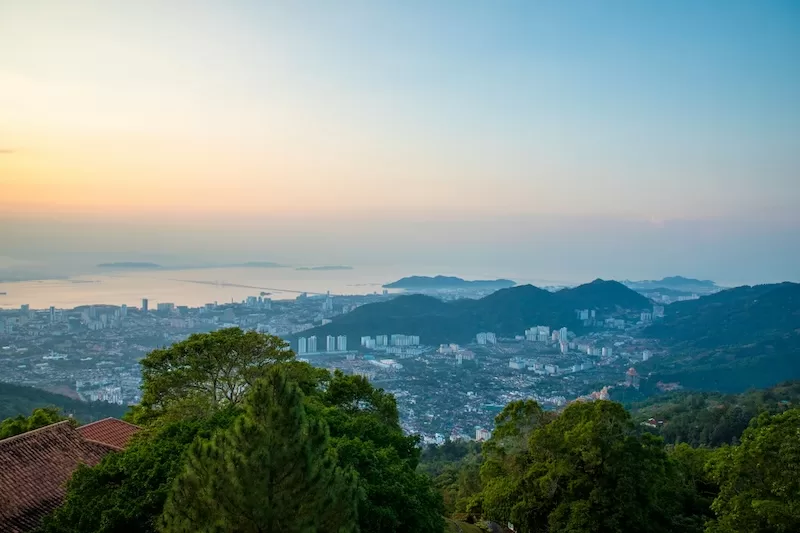
3. Johor Bahru & Iskandar Malaysia
Best For: Retirees who like the idea of being close to Singapore’s world–class healthcare and airport while enjoying Malaysian costs.
What Makes It Retiree–Friendly: Proximity to Singapore, growing infrastructure, new condos, and links to both countries.
Johor Bahru has changed a lot in the past decade. New high–rises and developments in Iskandar Puteri and around the Causeway make it feel more like a twin city to Singapore than a distant cousin. Many retirees choose to live in modern Malaysian condos, then pop over the border for shopping, specialist medical consults or flights.
Social life centers around condo communities, golf courses, cafés and malls. Cost of living sits above some smaller Malaysian cities but far below Singapore, which makes Johor Bahru feel strategic. Trade–off: border traffic and immigration formalities can wear thin if you cross too often.
For some retirees, the combination of Malaysian home base and Singapore next door feels exactly right.
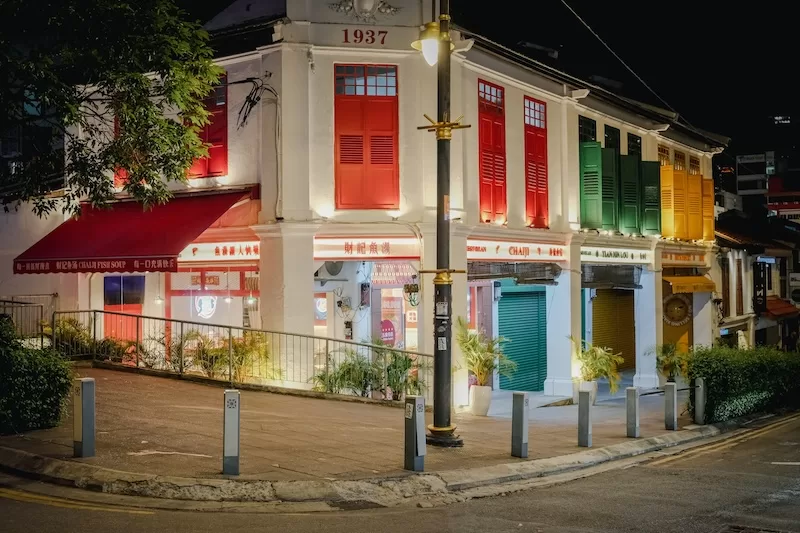
4. Ipoh & The Perak Highlands
Best For: Retirees who want a slower inland pace, lower housing costs and easier access to cooler highland retreats.
What Makes It Retiree–Friendly: Relaxed city vibe, lower rents than the coasts, good food, access to Cameron Highlands and nearby nature.
Ipoh has a loyal fan base among Malaysians. The streets hold old–world charm, coffee shops, limestone hills and cave temples. Retirees who settle here talk about more space for their money and a pace that feels gentler than KL or Penang.
You might wake up to mist on the hills, walk to a kopi shop for breakfast, and plan the next day’s bus ride up to the Cameron Highlands for cooler air. Healthcare exists, although for very advanced treatments retirees may travel to Kuala Lumpur. Ipoh suits those who prefer a less busy environment and who are happy to build their own social web rather than plug into a large expat scene.

5. Kota Kinabalu & The Sabah Coast
Best For: Retirees who want access to islands, diving and mountains, and who are comfortable with a slightly more frontier feel.
What Makes It Retiree–Friendly: Sea and mountain access, established expat pockets, growing private healthcare, and many outdoor options.
Kota Kinabalu sits on the coast of Borneo with Mount Kinabalu in the background and a sprinkling of islands just offshore. Life here can feel like a constant invitation to get outside. Day trips to coral reefs, hikes in nearby parks and weekend drives along the coast all slot easily into retirement schedules.
The city has malls, hospitals and condos, yet the overall atmosphere feels looser than peninsular Malaysia. Flights connect through Kuala Lumpur and regional hubs.
The trade–off: you are farther from the main national centers, so certain specialist services and shopping choices may require planning. For the right retiree, the payoff is a life shaped by horizons rather than skylines.

Culture, Language and Community Integration
Malaysia’s cultural fabric is one of the reasons many people choose to retire here. Hari Raya Aidilfitri, Chinese New Year, Deepavali and Christmas all appear on the calendar, often with decorations and food markets cropping up across the same streets. This layering of traditions shapes daily life as much as the weather does.
Bahasa Malaysia serves as the national language and a unifying thread. English functions almost as a second working language in cities, higher education and many companies. Mandarin, Hokkien, Cantonese and Tamil fill in the soundscape. Retirees who learn basic Bahasa phrases and show cultural curiosity tend to feel welcomed more quickly.
Community in Malaysia rarely arrives with a grand announcement. It sneaks up in small, ordinary places. You start showing up to the tai chi group in the park a few mornings in a row and suddenly people are saving you a spot in the shade. A weekly badminton game at the condo court turns into post-match iced Milo and running jokes. Bridge at a mall café becomes less about the cards and more about having “your table” and “your people.” A few hours spent volunteering at an animal shelter or children’s charity introduces you to locals who care about the same things you do.
These circles become your social safety net during visa waits, sudden health issues or homesick afternoons.

What to prepare before you move
Preparation sets the tone for the first year, and the first year tends to set the tone for everything after. Ready for the ease. Ready for the quirks. Ready for the parts that never show up on postcards.
Build a Timeline
Most retirees who transition well into Malaysia do it in stages instead of flipping their lives overnight.
Stage 1: Research and Planning (3 to 12 Months)
This is the phase of spreadsheets and conversations. You shortlist the cities or neighborhoods you want to test: maybe Penang vs. KL vs. a more laidback inland town like Ipoh. You speak with an immigration professional to clarify visa options and what documentation you’ll need later. You compare healthcare access in each location, looking at proximity to hospitals and types of coverage available. At the same time, your housing expectations become grounded in real numbers. Instead of guessing, you start linking condo prices, management fees and transport options to specific areas. You collect financial paperwork so visa applications eventually feel like the natural next step, not a fire drill.
Stage 2: Trial Stay (1 to 3 Months)
The second stage moves you from research into lived experience. You spend a month or more in the exact kind of home you think you will rent or buy. Instead of guessing what life costs, you track it. Groceries, air-conditioning, small repairs, to the shops, clinics and your preferred café or seafront, if you have one nearby.
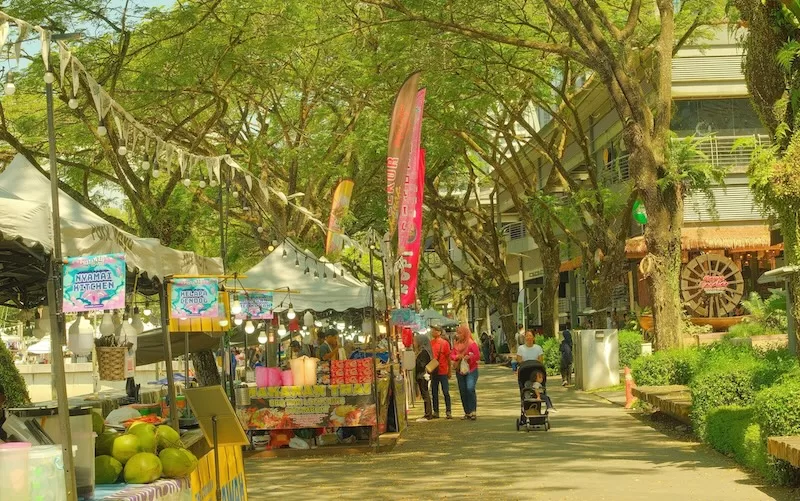
You meet neighbors and local service providers and see who shows up when promised. You visit the nearest hospital in person, learn how emergencies are handled and how long it takes to get there from your front door. Somewhere in this period you answer the question: does this lifestyle feel effortless enough to enjoy every day, or is it already starting to feel like work?
Stage 3: Commitment (Move Within 6 to 18 Months)
Once you’ve tested the waters and still want to stay, the final stage begins. You purchase a home or sign a long-term lease so your name sits on something official. You move utilities, internet and local services into your own account. You build a small network you can rely on: the resourceful electrician who shows up, the clinic you trust, the neighbor who knows which basement parking level floods during monsoon rain.
Financial and Paperwork Readiness
Retiring in Malaysia goes much more smoothly when your paperwork stays organized and your finances are easy to verify. A simple trick helps: create a folder titled something like “Malaysia Move – Important Documents” and make it the safe home for anything you’d never want to misplace.
Money and Banking
Into that folder go proof of income or pension statements and up-to-date records of savings set aside for living expenses. This is also where you keep any paperwork that helps any bank understand who you are and why you are opening an account. At some point you will want a local banking relationship, so preparing early smooths that later step. A separate note inside this same folder should outline your emergency reserve for medical issues or storm events. It does not need to be complicated. It just needs to exist. Before you leave your home country, it is wise to ask an accountant to review how your new life in Malaysia will interact with tax obligations back home, and to keep that summary with your financial papers.
Residency and Legal
This is where your essentials live: passport with plenty of validity, police clearances, marriage certificate if applicable, and the deed or lease for your chosen home. Store digital copies in the cloud so a misplaced bag doesn’t undo months of preparation.
Insurance
Malaysia’s tropical climate means rain, humidity and the occasional flood are part of everyday life. Make sure home and health insurance reflect that. Private medical coverage helps reduce uncertainty as you age. If you choose to own a car or scooter, keep those policy documents here too.
Medical Readiness
Before you move full-time, confirm that your prescriptions are available locally or that your doctor can suggest equivalents. Keep a buffer of at least sixty to ninety days of essential medications, especially in your first year. Take the time to locate your nearest clinic, hospital and emergency routes, and write down contact details for doctors, specialists and taxi drivers who will answer in a pinch.
A retirement lived entirely within four walls shrinks quickly. You can have the right visa, the perfect condo and all the logistics sorted, but without a social rhythm the days begin to blend together. In Malaysia, community doesn’t just appear on your doorstep. It grows in response to the effort you put into it.
One of the easiest ways to begin is by joining something that happens regularly. It might be a weekly badminton session at the condo court, a language class where laughter breaks the ice, or a volunteer role at an animal shelter or food drive. You could make the Sunday market a standing appointment or join neighbors for a Mamak supper after evening prayers. As you keep showing up, you gather the tiny anchors of belonging: the WhatsApp number of a neighbor who knows which clinic stays open late, the contact for someone who fixes air-conditioning fast, the friendly vendor who saves you the last curry puff because you’re now a familiar face.
That’s how retirement here expands instead of contracts: not with grand gestures, but through steady participation in the life happening around you.
The Heart Work of Starting Over
Starting over is a lot about paperwork and packing, sure, but it’s more than that. It’s also the internal shift that happens when a place stops being a backdrop for a vacation and starts becoming the setting of your real life. In Malaysia, that shift often comes with a few unglamorous tests. A monsoon downpour might turn your street into a shallow river just as you’re trying to get to the clinic. A haze day might have you questioning the air you breathe. Or it might hit you on a holiday when your family is celebrating far away and you’re suddenly aware of how new everything still feels.
This is the heart work of retiring abroad. It asks you to be patient with yourself. To lean into the unfamiliar. To laugh when the schedule loses to the weather. To say yes when someone invites you to try roti canai for breakfast, even if you don’t know the right way to eat it yet. It asks you to ask for help, even though you spent a lifetime being the one who offered it.
The transformation doesn’t arrive as a dramatic milestone. Instead, it builds gradually. One morning you wake up and realize the market vendors greet you before you speak. You don’t check the map to get home. You no longer panic when the rain clouds gather. You have a usual order and a favorite hawker stall and a neighbor who knocks just to say hello.
That’s when Malaysia stops being an adventure you’re trying to manage. It becomes a life you’re quietly growing into, one friendly encounter, one new routine, one brave step at a time.

FAQs
Q1. What kind of income or assets do I need to retire in Malaysia?
Malaysia’s long-stay visa scheme, Malaysia My Second Home Program (MM2H), uses a tiered structure rather than a simple published “minimum income for retirees.” You will need to show proof of liquid assets, fixed deposit arrangements, or offshore income depending on your age and the tier you apply for. For many retirees, the requirement might include a fixed deposit in a Malaysian bank and demonstrable monthly income from foreign-sourced sources. It’s wise to ensure that your assets and income cover housing, healthcare, utilities and your lifestyle in Malaysia.
Q2. Will I be taxed on my pension, investments or retirement income in Malaysia?
Because Malaysia operates a territorial tax system, foreign-sourced income brought into Malaysia is currently exempt from Malaysian tax for tax residents under certain conditions. However, you still need to check the details: for example, how long you reside in Malaysia, your tax residency status, and how your home country treats your pension or investment income. Some Malaysian-source income remains taxable and policies can change.
Q3. Can I bring my home country’s social security or pension payments to Malaysia?
Yes. Foreign pensions or Social Security payments can in many cases be transferred into Malaysia and used to support your retirement there. Because of Malaysia’s territorial tax system, these payments may not incur Malaysian tax if they qualify as foreign-sourced and you meet other criteria. Still, be sure your retirement income can be received abroad, your banking is set up properly, and your home country obligations (tax or otherwise) are fully understood.
Q4. How do I include my spouse or partner in the move?
If you are applying together under a long-stay visa like MM2H, your spouse (and in some cases dependents) can be included as part of your application. The scheme rules allow for dependents under certain conditions. You should prepare marriage certificates, birth certificates for children, proof of relationship and ensure you meet the financial and other eligibility requirements for the main applicant plus any dependents.
Q5. What are the hidden or underestimated costs I should plan for as a retiree in Malaysia?
Some costs may appear modest at first but grow over time. Check condo management and sinking-fund fees, higher utility bills if air-conditioning runs often, imported food or brand goods, private health insurance (especially as you age), vehicle or scooter ownership if relevant, and costs tied to property maintenance in a humid tropical climate. Planning a buffer and budgeting for the less-visible expenses makes your retirement more resilient.
Q6. How strong is healthcare for retirees in Malaysia, and what should I ensure before moving?
Malaysia offers many good public and private hospitals, especially in larger cities like Kuala Lumpur, Penang and Johor Bahru. Private hospitals hold international accreditation in some cases. Before moving, check the quality of the closest hospitals to your potential home, understand how private insurance works, check whether your medications or treatments can be handled locally, and build a plan for emergencies (e.g., evacuation to a larger facility if needed).
Q7. Which cities or regions are best for retirees in Malaysia?
There is no single “best” location. Key factors include infrastructure, healthcare access, cost of living, lifestyle preference and climate. For example, Kuala Lumpur offers major-city convenience, Penang offers island city life with culture and expats, Johor Bahru appeals when you want proximity to Singapore, and more rural or highland areas offer peace but may require more travel for specialist services. The right match depends on your priorities.
Q8. Is dual citizenship possible if I naturalize in Malaysia?
Malaysia typically does not allow dual citizenship for adults. Naturalization is not structured around retirement visas and tends to require long-term residence, language integration and other criteria. For most retirees, a long-stay visa (rather than citizenship) offers a more practical solution.
Q9. How safe is retirement life in Malaysia?
Many retirees report feeling safe in well-populated condo communities and established neighborhoods. Like anywhere, safe living depends on careful neighborhood choice, understanding local norms, and building a network. Areas with higher expat presence tend to have proven service infrastructure. It’s still smart to check the local area you like, meet neighbors, and visit at different times of day.
Q10. What about my checklist for the first year of retirement in Malaysia?
Your first year should focus on three pillars: (1) establishing a real budget based on your actual spending in Malaysia (not your home country assumptions), (2) building a local network (neighbors, service providers, medical contacts, social groups) and (3) securing and maintaining your visa/residency status and your home base setup. Use the first months to test your routine, adjust expectations, and plant the roots that make the move feel like a home instead of just a change of scenery.
Retirement, Reimagined in Malaysia
Malaysia is generous to those who take the time to understand it. Healthcare is strong. The infrastructure is modern. Foreign income often extends further than expected. You’re surrounded by diversity and you’re encouraged to enjoy that richness rather than observe it from the sidelines. But Malaysia is also real life: humid days, rainy seasons, learning how things get done here, and shaping your routines around the new environment instead of expecting it to mirror the old one.
Give yourself the space to adjust, and everyday life begins to reward you in small, satisfying ways. The market vendor greets you with a smile before you even speak. The neighbor upstairs checks in if they haven’t seen you in a while. Plans turn into traditions: Saturday dim sum, a weekly neighborhood walk, a spontaneous trip to Langkawi because flights were cheap that morning. One day you notice that the unfamiliar has become familiar, not because you forced it, but because you stayed open to it.
If this version of retirement is the one you’ve been working toward, we’re here to help you make the leap with confidence. Our newsletter delivers practical advice, lived experience and timely updates for people building a life abroad with purpose.
Malaysia isn’t just a place to spend your later years. It’s a place to live them fully. And your new beginning deserves nothing less.
